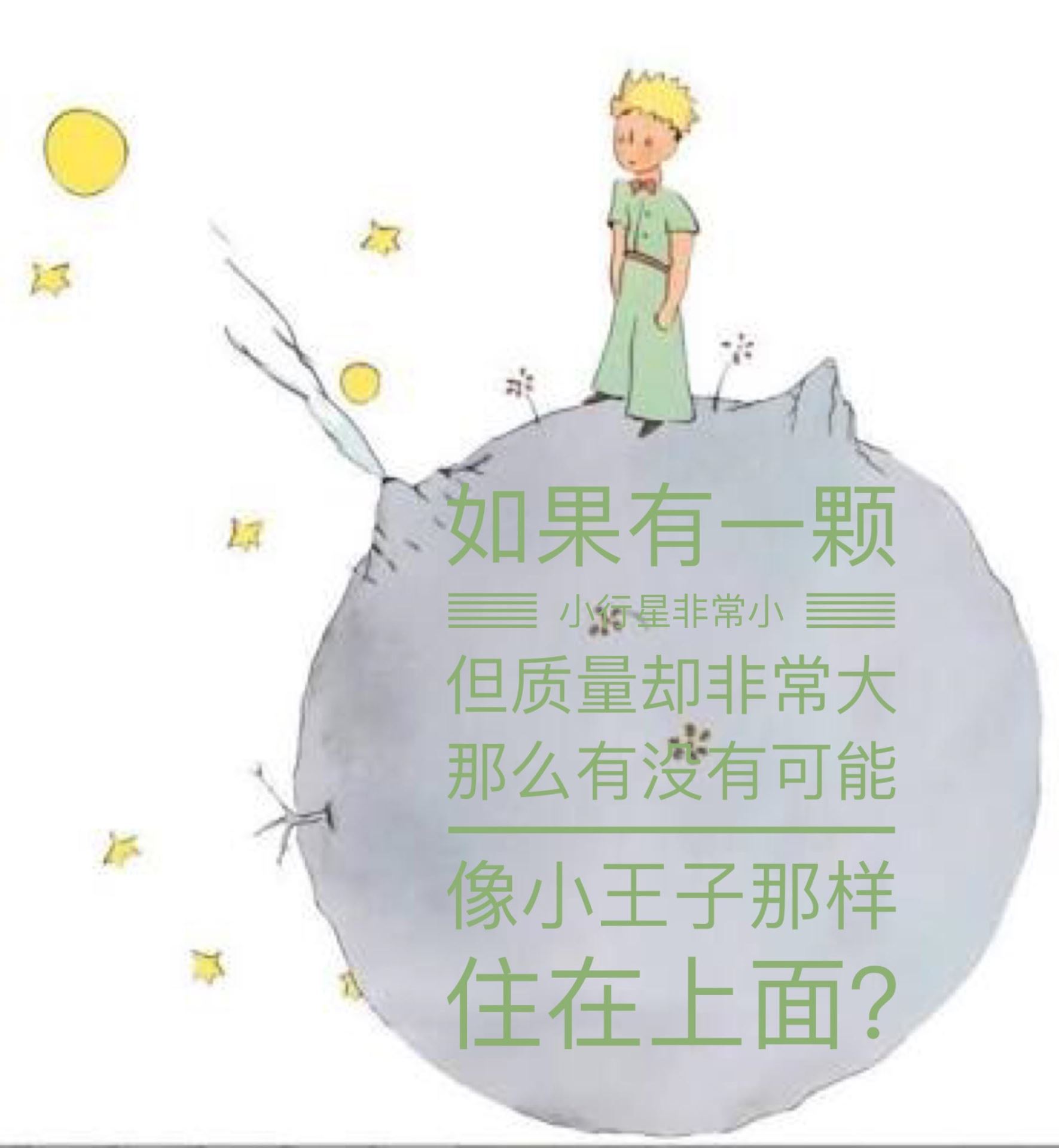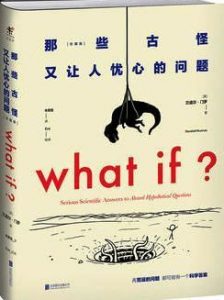‘The Little Prince’ is the kind of story that would have children asking lots of ‘What if?’ questions. Here is such a ‘What if?’ question in the picture below.
The question in the above image asks:
如果有一颗小行星非常小,但质量却非常大,那么有没有可能像小王子那样住在上面?
In pinyin:
Rúguǒ yǒu yī kē xiǎoxíngxīng fēicháng xiǎo, dàn zhìliàng què fēicháng dà, nàme yǒu méi yǒu kěnéng xiàng xiǎo wángzi nàyàng zhù zài shàngmian?
In English:
If an asteroid was very small but supermassive, could you really live on it like the Little Prince?
And it’s such ‘What if?’ questions that Randall Munroe answers a lot of in his ‘What if? book. Munroe gives ‘serious scientific answers’ to ‘absurd hypothetical questions’. Makes for really interesting reading, and by reading in Chinese, as a family we get to integrate, in this case, Literature (we read and studied ‘The Little Prince’ recently), Science, and of course Mandarin, adding deeper connections to all elements. Munroe answers all sorts of ‘What if?’ questions, from ‘What if the amount of deceased Facebook accounts exceed live Facebook accounts?’, to ‘What if I jumped out of a plane with a huge helium balloon?’ to ‘What if everyone on earth jumped up and down at the same time?’. This book is cool in itself to integrate lots of learning areas with curious imagination, but it’s also motivating material for intermediate second language learners to advance their reading skills in a fun and meaningful way.
So while we were in China recently, we bought both Antoine de Saint-Exupery’s ‘The Little Prince’ and Randall Munroe’s ‘What if?’ translated into Mandarin.
I have typed out the first part of the answer in Mandarin to the above ‘Little Prince’ question, for you to get an idea of the level of Chinese required to read this crazy book. That way you can see if suitable for your kids’/students’ level. But you can also access the full answer to ‘The Little Prince’ ‘What if? question in English by clicking the link.
小世界
如果有一颗小行星非常小,但质量却非常大,那么有没有可能像小王子那样住在上面?
‘小王子’由 ‘安托万·德圣埃克絮佩里’ 讲述了一个来自遥远的小行星的旅行者的故事。整个故事简单而又伤感,意味深长且让人念念不忘。这本书表面上是写给小孩儿看的,但你却很难说这本书到底是写给谁看的。但不管怎样,这本书肯定找对了读者,它是史上销量最多的书之一。
小王子一书写于1942年。在这个时间段写关于小行星的故事挺不错的,因为在1942年人们甚至都不知道小行星长什么样子。即使是用那时最先进的望远镜,那些最大的小行星看起来也不过是一团亮光。事实上这就是’‘小行星’一词的来源一意思是‘像星星那样的’。
直到1971年,‘水手9号’探测器造访火星并拍下了火卫一和火卫二的照片后,人们才第一次一睹小行星的真容。这些被火星俘获的小行星也加深了人们心中‘小行星就像是坑坑洼洼的土豆’的印象。
在20世纪70 年代之前,科幻小说中的小行星基本都是圆形的,就像行星一样。而‘小王子’一书则更进一步,它设想了一个有重力、空气和一枝玫瑰的小行星。在此不应该批评这本书一点都不科学,一是因为它本来就不是一本讲小行星的书;二是它开篇就是一个寓言,讲述成年人总是从字面意思看待一切是多么地愚蠢。
因此我不打算用科学去削减这个故事,相反我打算看看科学能不能加进去什么神奇的东西。如果确实有一颗超级密实的星球,并且表面重力大到能让人在表面上走动,那么它肯定会有一些十分惊人的性质。
如果小行星是半径1.75米,那么它得有5亿吨重才能拥有像地球那样的表面重力。,这差不多相当于地球上所有的人加起来那么重。
如果你站在星球表面,那么你就会感受到潮汐力。你的脚会感觉比头更‘重’一些,你的感觉就像是被拉伸了一样:就像你躺在橡胶球弯曲表面上,或者你躺在旋转木马的地上,并且头靠近中心。
星球表面的逃逸速度约为每秒5米。这个速度比百米冲刺要慢,但其实还是挺快的。作为经验估算,如果你没法扣篮,那么你就不能通过竖直起跳的方式逃离这颗星球。
For more of the answer, and answers to many other absurd questions, just find a copy of the book in the second language you are learning, and read away!







